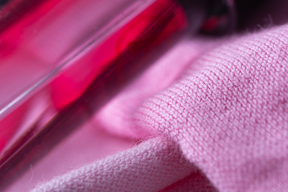FinnFiberColor – Spun cellulose fibres and sustainably colored textiles

The FinnFiberColor project,which is led by the Department of Bioproducts and Biosystems at Aalto University, has just reached a milestone where two years of work are coming together.
The project has provided the industry with a good and compact understanding of the properties of textile fibres derived from alternative feedstocks, their yarn potential, dyeability and fabric durability. Furthermore, it has studied the consumer perception and appreciation of fabrics knitted from different materials.
‘After two years of successful collaboration between Aalto University and ten companies we have started to harvest the fruits of our work’, says the project PI Prof. Michael Hummel.
‘We tried to bring together experts of the entire textile value chain, from raw material to final textile products. With this joint effort it was possible to produce textiles from alternative feedstocks such as straw, establish innovative, environmentally friendly dyeing methods, and collect feedback from the end users’, Hummel says.
Increasing awareness of the properties of materials
Pirjo Kääriäinen, Professor of Design and Materialities, has played and essential role in the project. Kääriäinen says that materials research is usually focused on developing technical quality and functionality, and users get involved quite late in the process. However, textiles are on our skin all the time, so the sensory feel of them is very important for many people.
‘We wanted to find out what prospective users think about the feel of cellulose-based textile fibres, and the perceptions associated with them. How does Ioncell feel compared to, say, cotton? And do people's perceptions of the material change when they are told about its origin?’
The journey from laboratory trials to production and products is a long one, with much to be validated at each stage before new materials can be put to real use. Dyeing is one of the steps that consumes a lot of water, energy, and chemicals, and creates huge amounts of effluents. Thus, alternatives are needed urgently.
‘The entire textile and clothing sector is going through a sustainability revolution, and we are living in a time where there is a lot of marketing greenwashing going on. When new materials are introduced to the market, convincing stories are needed to attract users - but they should also be true. A balance of storytelling and genuinely truthful messaging needs to be built as new materials meet customers.’
Kääriäinen hopes that the results of the FFC project will contribute to the commercialization of new Finnish textile innovations.
‘People's material awareness is generally low, and in the future, I will continue to try to be involved in projects where I can contribute to it. The world of materials can become a more sustainable place when people take an interest in where materials come from, how they are used, and what happens to them when they are no longer used’, Kääriäinen says.
Valuable cooperation with industry partners
The FFC project has just reached a milestone where two years of work are coming together. The most important aspect of the project has not only been the final experimental results, but the dissemination of the methodology to industry partners.
‘The FFC project has provided the industry with a good and compact understanding of the properties of novel textile fibres, their yarn potential, dyeability and fabric durability. The project has also increased consumer appreciation of fabrics knitted from different materials’, says Annariikka Roselli, Development Manager of Metsä Spring.
Roselli has been a representative of Metsä Spring as a member and chairperson of the FFC steering group. She says that Metsä Spring, which is trying to bring its own textile fibres to the market, will benefit greatly from understanding the properties of the fibres needed.
‘We need to understand the development of relevant legislation and how different technologies affect the required fibre properties. It is also important that the development in this sector is supported by Finnish educational institutions, because services, experts and workers will be needed if one or more of the textile fibre technologies currently being developed in Finland are commercialised’, says Roselli.

- Published:
- Updated:
Read more news

Camilla Hollanti elected as a member of Finnish Academy of Science and Letters
Camilla Hollanti leads a prominent research group on applications of algebra and number theory. The central topic of her research is to apply the methods of algebra and number theory to problems encountered in communication systems. Applications include wireless security and secure distributed computation.
Aalto ARTS alum Vidha Samya’s artwork featured at the Venice Biennale 2024
The Pavilion of Finland presents ‘The pleasures we choose’ at the 60th International Art Exhibition – La Biennale di Venezia until 24 November 2024.
IoT Forge donates EUR 1 million to the School of Engineering
The donation will be used for research and education on the Industrial Internet and digital twins.